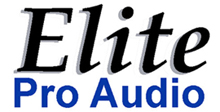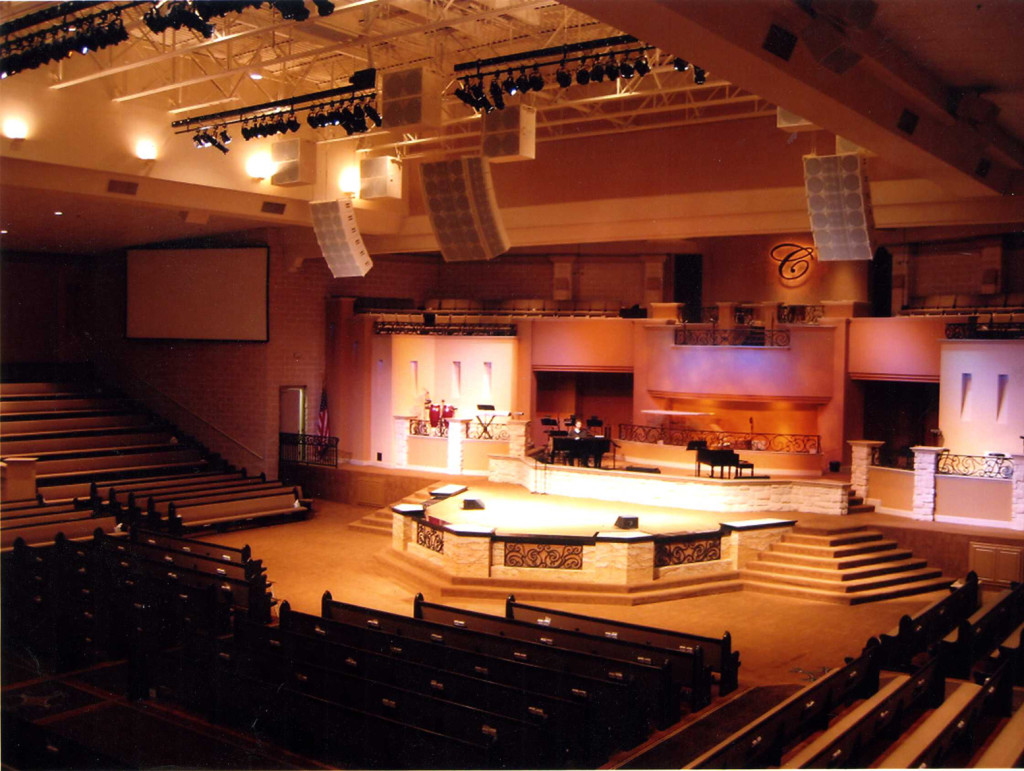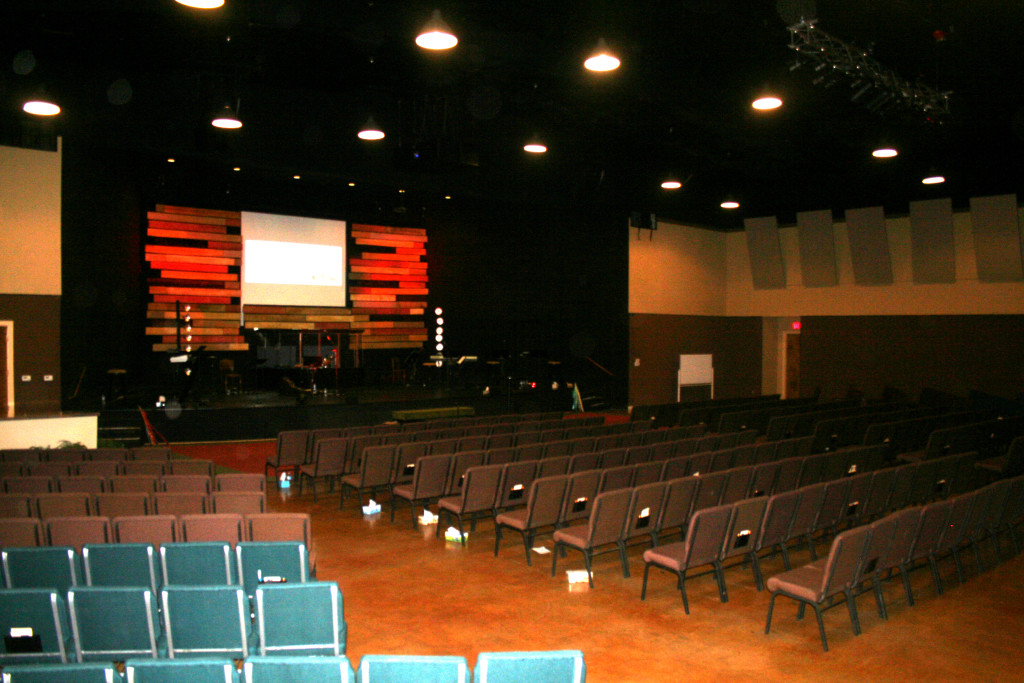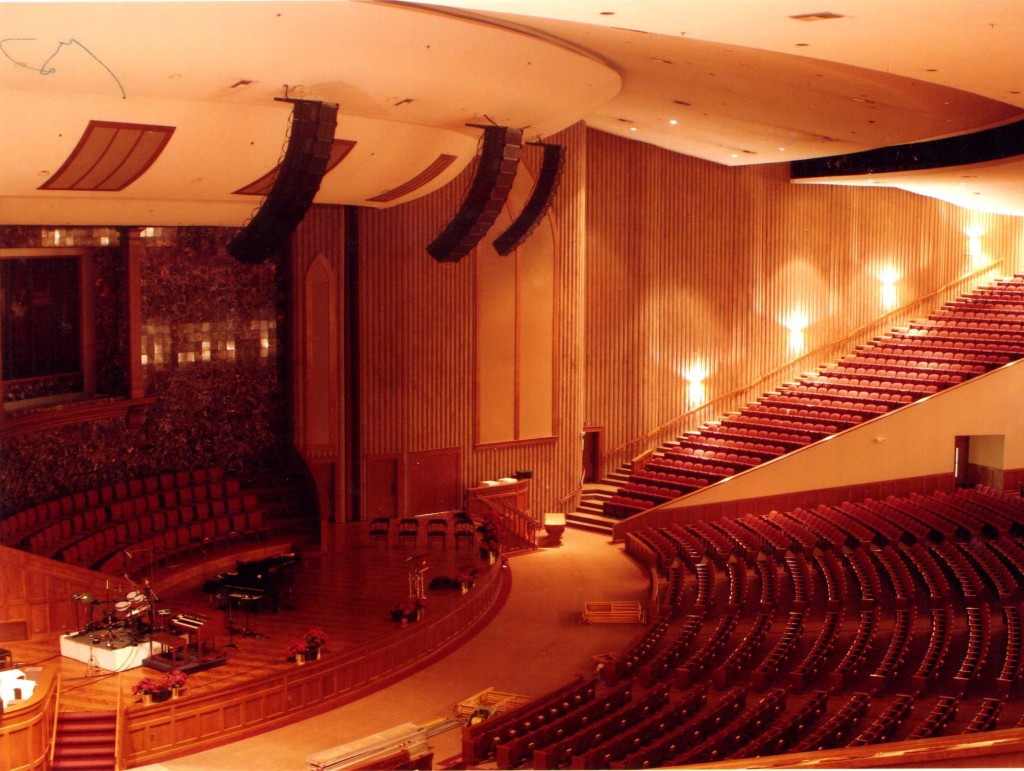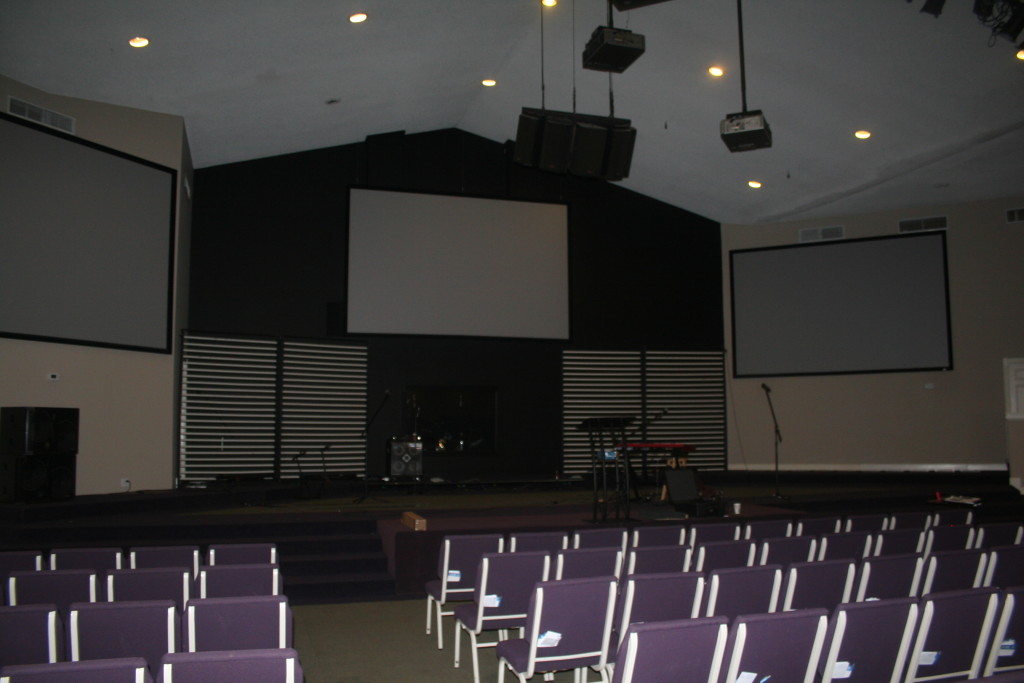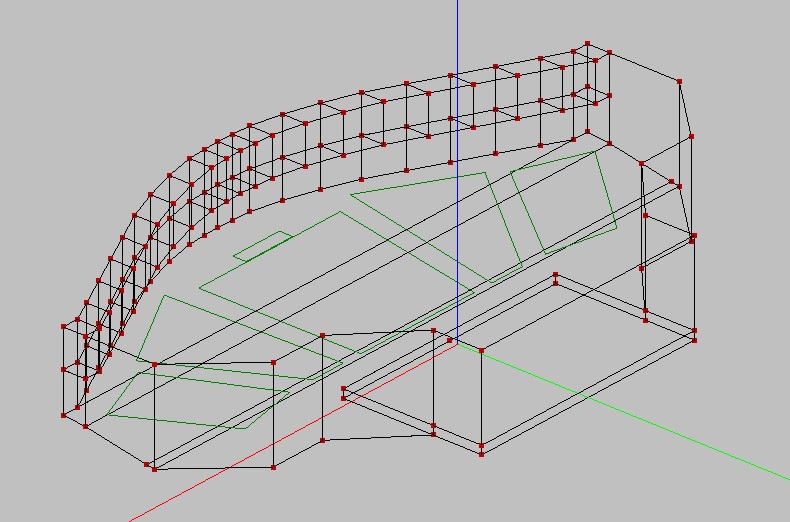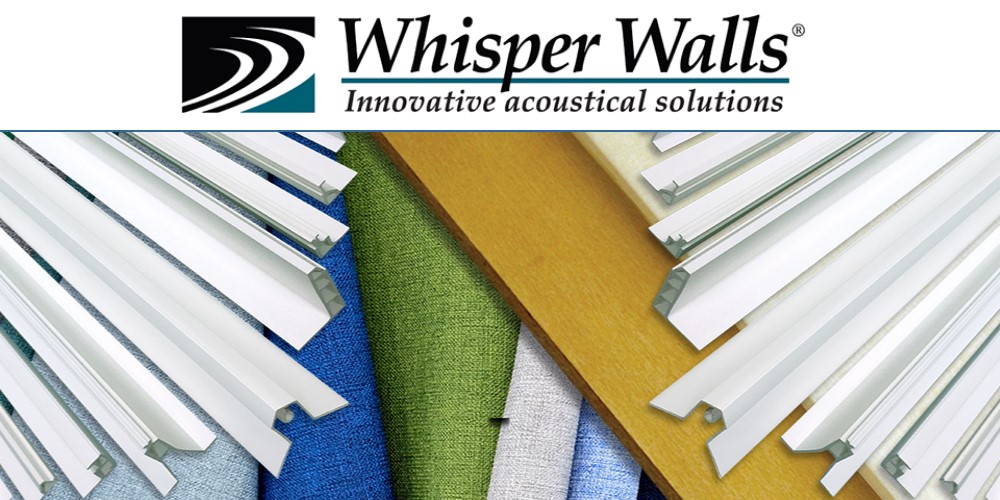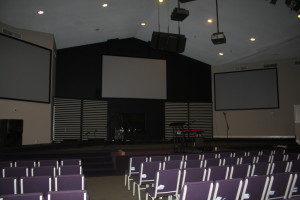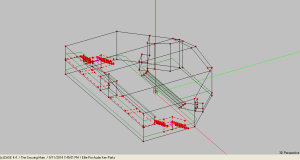Nestled in the heart of The Woodlands, TX The Crossing Church is a dynamic inter-denominational church body with contemporary worship which incorporates multimedia sources including video, lighting, recorded audio and live music and speaking, all which are repackaged in post-production for live streaming and their online service library.
The Challenge:
The main 500 seat room consists of a primary gypsum and wood surfaces built on a wood frame and joist with the main floor divided up into fan seating of 3 sections and a narrow balcony which covers the back 4 rows of the main floor. The challenge was providing equal audio coverage through out the seating area and increase the intelligibility. The primary obstacles were the large relatively parallel surface created from the glued carpet over concrete and gypsum ceiling with the width of 99 feet by 60 deep and a height from 20 feet to 25 feet at the apex in the center of the room. This created a reverberation time of 3.2 seconds at 250-500 Hz. The rapid fall off of 2.5kHz -5kHz increased the challenge of intelligibility with the musical performances as well as with speaking. The existing mono speaker array ( 5 traps with 15″ LF with a 90 x 50 horn) was placed 18 feet above the pulpit in center stage, 40 feet from the back of room and tilted down towards the 5th row on the floor. The outside horns, splashing the stage walls and their reflection canceling out the much needed high end frequencies for the left and right side of the room. The balcony, had no direct coverage.
Plan of Action:
EASE software from AFMG was employed to create a 3D model of the room to gather the much needed data to determine what the problems were the results of the room design and build. Ease revealed that the room also had a tremendous fast roll off at 250Hz and below making the existing subs overworked and virtually non-effective.
Once EASE revealed the inherent acoustical properties of the room, it was obvious that the room needed to be tamed with both absorption and reflective surfaces, predominantly Heimholtz Resonators surrounding the room.
Because the room is so wide, it was recommended that a point array system was determined to be the best Hi/Mid configuration positioned across the front of stage and supported with a delay line. Since the room was also pre-wired with a 70 volt system of 8 ceiling speakers in the balcony and below, we chose to upgrade with JBL Control 47lp to provide another line of delay. Originally 8 subs were to be employed in a cardioid pattern to provide direction to the low frequencies and reduce their effects off the stage walls reducing the possibilities of muddiness.
The Decision and Final Results:
Since the church had just purchased new property for the construction of a new building, it was determined to try to reuse the existing 6 speakers (Apogee AE5) and amps and rewire and upgrade the system with the employment of a BSS London Blu, 4 more crown XTi Amps, JBL Control 47lp, and re-hang the speakers so that a more even dispersion of audio was through out the room. The Apogee subs were brought together and flown in the front center of the stage and placed in a cardioid pattern to give a more even dispersion of low end through out the room. One AE5 was hung directly underneath the subs and tilted down to cover the first section of the seating. Two more AE5s were flown using custom EPA T-Sway Bars and tilted to provide coverage to each side of room. The remaining 3 AE5s were hung in a delay line position in front of balcony to cover both the balcony and under balcony using the same custom EPA T-Sway bars. To supplement the delay, the 8 ceiling speakers were employed and delay so that all speakers in the room were time aligned to the front main speakers. To accomplish the specialized eq for the Apogee as well as the providing control of the bi-amped speakers and the time delay, the BSS London Blu (4 in 12 out) was utilized
Once the installation was completed and the room tuned, the sound was clear through out the with improved intelligibility and smooth low end response. The room was also not acoustically corrected using the recommended Heimholtz resonators as this would have been too costly for the short amount of time the church body was going to be using the space. Overall, using EASE provided the direction to go and revealed the optimum position of each speaker and the the settings to employ in the BSS London.
